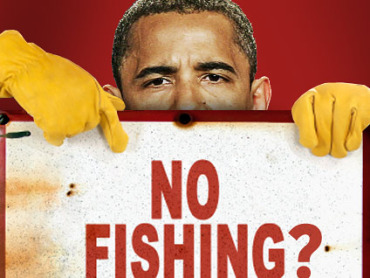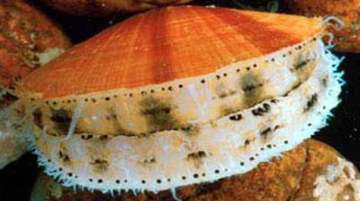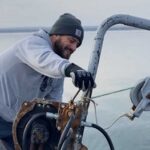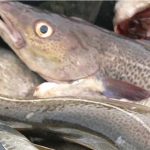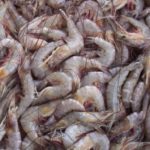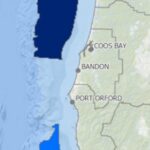Monthly Archives: May 2016
Baby Salmon being devoured by predators – We’re spending millions to feed the fish!
 It’s a quiet, damp Friday at the Feather River Fish Hatchery and not much is happening above the surface. The buildings where they spawn the adult salmon in the fall are all empty. Outside, two workers amble down the long concrete ponds in waders, fixing things here and there. There are no visitors except one, a journalist there to pay his last respects. Below the surface are millions of baby salmon. They fill the raceways, getting fat on free chow so that they can be released in the river any day now — and be devoured by predators. The predators are striped bass, a non-native species that lives very comfortably in the river downstream. If you read Friday’s fish report with religious fervor like I do, you’ll notice that fishing for stripers in the Feather River has been amazing recently because the hatchery is slowly releasing salmon smolt into the river. It’s like ringing a dinner bell for the stripers. Read the story here 07:50
It’s a quiet, damp Friday at the Feather River Fish Hatchery and not much is happening above the surface. The buildings where they spawn the adult salmon in the fall are all empty. Outside, two workers amble down the long concrete ponds in waders, fixing things here and there. There are no visitors except one, a journalist there to pay his last respects. Below the surface are millions of baby salmon. They fill the raceways, getting fat on free chow so that they can be released in the river any day now — and be devoured by predators. The predators are striped bass, a non-native species that lives very comfortably in the river downstream. If you read Friday’s fish report with religious fervor like I do, you’ll notice that fishing for stripers in the Feather River has been amazing recently because the hatchery is slowly releasing salmon smolt into the river. It’s like ringing a dinner bell for the stripers. Read the story here 07:50
Video: Coast Guard medevacs scallop fisherman 35 miles east of Chincoteague, Va.
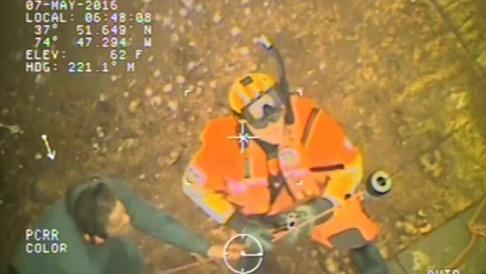 The Coast Guard medevaced a man Saturday from a fishing boat about 35 miles east of Chincoteague. Watchstanders at the Sector Hampton Roads Command Center in Portsmouth received notification at approximately 10:45 a.m. a 58-year-old crewman aboard the commercial fishing boat Good News II out of Hampton was having trouble breathing and requested assistance. An MH-60 Jayhawk helicopter crew from Air Station Elizabeth City, North Carolina, diverted from another mission at about 10:50 a.m. The aircrew arrived on scene at about 11:25 a.m., hoisted the man and transported him to Sentara Norfolk General Hospital in Norfolk at about 12:20 p.m. in stable condition. Link Watch video here 18:24
The Coast Guard medevaced a man Saturday from a fishing boat about 35 miles east of Chincoteague. Watchstanders at the Sector Hampton Roads Command Center in Portsmouth received notification at approximately 10:45 a.m. a 58-year-old crewman aboard the commercial fishing boat Good News II out of Hampton was having trouble breathing and requested assistance. An MH-60 Jayhawk helicopter crew from Air Station Elizabeth City, North Carolina, diverted from another mission at about 10:50 a.m. The aircrew arrived on scene at about 11:25 a.m., hoisted the man and transported him to Sentara Norfolk General Hospital in Norfolk at about 12:20 p.m. in stable condition. Link Watch video here 18:24
Coast Guard investigating the cause of the collision and sinking of Scallop F/V Last Stand
 The Coast Guard is investigating the cause of an accident that sunk a scallop boat April 28 six miles off Cape May. The 42-foot scallop boat, Last Stand, homeported in Cape May, collided with a 78-foot tug, Dean Reinauer, from New York, that was pushing a 500-foot barge southeast of this city about 1 p.m. April 28. The scallop boat issued an electronic distress signal before being rescued by the Coast Guard. It sank within minutes of the collision. The investigation into the accident is “standard” according to the Coast Guard, however, those on scene credit preparedness of the crew for their safe rescue. “We are looking into the cause of the accident by conducting interviews of the crew of all vessels involved, gathering witness statements, obtaining track lines and speed of vessels, recorded radio transmissions, looking at fatigue factors, and also using the guidance set forth in COLREGS, navigational ‘rules of the road’,” Two video’s Read the story here 17:42
The Coast Guard is investigating the cause of an accident that sunk a scallop boat April 28 six miles off Cape May. The 42-foot scallop boat, Last Stand, homeported in Cape May, collided with a 78-foot tug, Dean Reinauer, from New York, that was pushing a 500-foot barge southeast of this city about 1 p.m. April 28. The scallop boat issued an electronic distress signal before being rescued by the Coast Guard. It sank within minutes of the collision. The investigation into the accident is “standard” according to the Coast Guard, however, those on scene credit preparedness of the crew for their safe rescue. “We are looking into the cause of the accident by conducting interviews of the crew of all vessels involved, gathering witness statements, obtaining track lines and speed of vessels, recorded radio transmissions, looking at fatigue factors, and also using the guidance set forth in COLREGS, navigational ‘rules of the road’,” Two video’s Read the story here 17:42
Starving fishermen blame government restrictions for loss of income
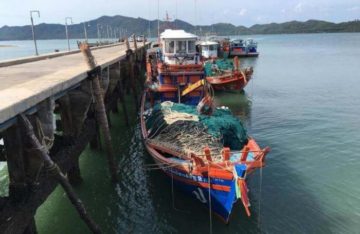 Phang Nga Thailand-More than 300 anchovy fishermen, claiming loss of income following the introduction of new regulations established by the Ministry of Agriculture and Cooperatives, gathered in protest at Laem Mai pier at Koh Yao Noi on Thursday. Led by spokesperson Tiwakorn Thongkert, the fishermen demand changes to regulations which prevent vessels weighing 10 tons or more from fishing within three miles of the shore. “About 30 boats are affected by the regulations. Anchovy are usually found close to the shore. The fish can be found outside the three-mile exclusion zone but those catches are so small it is not worth the fishermen’s time and expense,” said Mr Tiwakorn. The fishermen have been losing out since the three-mile zone was introduced about a month ago, so we want the boundary to be reduced from three miles to 1.5 miles,” he added. Read the rest here 12:46
Phang Nga Thailand-More than 300 anchovy fishermen, claiming loss of income following the introduction of new regulations established by the Ministry of Agriculture and Cooperatives, gathered in protest at Laem Mai pier at Koh Yao Noi on Thursday. Led by spokesperson Tiwakorn Thongkert, the fishermen demand changes to regulations which prevent vessels weighing 10 tons or more from fishing within three miles of the shore. “About 30 boats are affected by the regulations. Anchovy are usually found close to the shore. The fish can be found outside the three-mile exclusion zone but those catches are so small it is not worth the fishermen’s time and expense,” said Mr Tiwakorn. The fishermen have been losing out since the three-mile zone was introduced about a month ago, so we want the boundary to be reduced from three miles to 1.5 miles,” he added. Read the rest here 12:46
Comox C.G. Base closure supported by Standing Committee on Fisheries and Oceans – UNIFOR responds
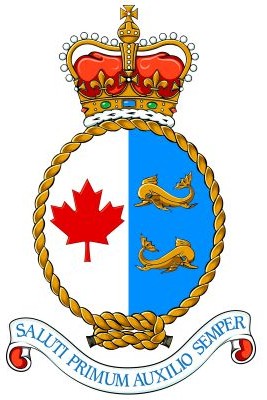 A review by Members of Parliament has failed to save a Canadian Coast Guard base on Vancouver Island. Critics hoped the review by the Standing Committee on Fisheries and Oceans would lead to a reversal of the decision to close the Marine Communications and Traffic Services (MCTS) centre in Comox. Instead, the committee found the closure would not impact the emergency marine response on the West Coast. “I’m very pleased that the standing committee on Fisheries and Oceans has recognized that marine safety remains a top priority, even with the consolidation of Comox,” said Fisheries and Oceans Minister Hunter Tootoo. However, the committee did find there are problems with coast guard radio communications in B.C. Read the rest here UNIFOR Response – Liberals on fisheries committee turn their backs on BC coastal communities Read the press release 11:43
A review by Members of Parliament has failed to save a Canadian Coast Guard base on Vancouver Island. Critics hoped the review by the Standing Committee on Fisheries and Oceans would lead to a reversal of the decision to close the Marine Communications and Traffic Services (MCTS) centre in Comox. Instead, the committee found the closure would not impact the emergency marine response on the West Coast. “I’m very pleased that the standing committee on Fisheries and Oceans has recognized that marine safety remains a top priority, even with the consolidation of Comox,” said Fisheries and Oceans Minister Hunter Tootoo. However, the committee did find there are problems with coast guard radio communications in B.C. Read the rest here UNIFOR Response – Liberals on fisheries committee turn their backs on BC coastal communities Read the press release 11:43
P.E.I. Lobster fishermen still waiting for prices
 Lobster fishermen have been selling their catch on the wharves all week — but they still don’t know what they’re getting paid for them. P.E.I. Fishermen’s Association president Craig Avery told CBC News they would usually know by now, but it looks like fishermen will be waiting another week. “It is frustrating for sure, but we will just have to be patient and wait. I mean, fishermen have been asking, you know, calling the PEIFA office. We have no way of knowing,” said Avery. “They have been calling their buyers but, you know, the price doesn’t seem to be established yet. So until next Friday when we start to get our first statement, we won’t know what we’re getting.” Link 09:32
Lobster fishermen have been selling their catch on the wharves all week — but they still don’t know what they’re getting paid for them. P.E.I. Fishermen’s Association president Craig Avery told CBC News they would usually know by now, but it looks like fishermen will be waiting another week. “It is frustrating for sure, but we will just have to be patient and wait. I mean, fishermen have been asking, you know, calling the PEIFA office. We have no way of knowing,” said Avery. “They have been calling their buyers but, you know, the price doesn’t seem to be established yet. So until next Friday when we start to get our first statement, we won’t know what we’re getting.” Link 09:32
Just for the Halibut – Quota in the Gulf of St. Lawrence
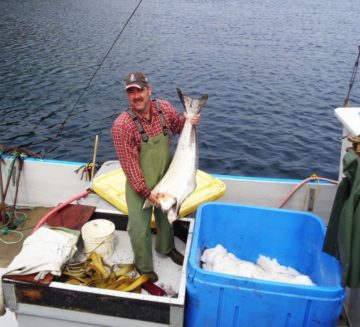 While most attention these days is focused on who should should get how much of a share of northern shrimp, the Department of Fisheries and Oceans is trying to decide how the Atlantic halibut quota in the Gulf should be shared between fishermen in the five Atlantic provinces. These days, fishermen who ply the waters in the Gulf of St. Lawrence, fetch anywhere from $6 to $7 a pound for halibut they catch on hook and line. The quota in the Gulf of St. Lawrence is limited — just over 800 tonnes for the past two fishing seasons — and is shared up between five provinces. Read the rest here 08:58
While most attention these days is focused on who should should get how much of a share of northern shrimp, the Department of Fisheries and Oceans is trying to decide how the Atlantic halibut quota in the Gulf should be shared between fishermen in the five Atlantic provinces. These days, fishermen who ply the waters in the Gulf of St. Lawrence, fetch anywhere from $6 to $7 a pound for halibut they catch on hook and line. The quota in the Gulf of St. Lawrence is limited — just over 800 tonnes for the past two fishing seasons — and is shared up between five provinces. Read the rest here 08:58
Video: Coast Guard medevacs injured fisherman 60 miles off Cape May, NJ
 The Coast Guard medevaced a 27-year-old fisherman Friday after the man suffered a leg injury 62 miles east of Cape May. A crew member from the fishing vessel Stacy Lee called watchstanders at Coast Guard Sector Delaware Bay in Philadelphia at approximately 12:45 a.m. to request assistance. An MH-65 Dolphin helicopter crew from Coast Guard Air Station Atlantic City arrived on scene and hoisted the man at approximately 2:40 a.m. The helicopter crew transferred the man to EMS personnel at the AtlantiCare Regional Medical Center in Atlantic City, New Jersey. “The crew of the fishing boat did a good job administrating first aid to the survivor,” said Petty Officer 3rd Class Joe Foss, the rescue swimmer on the case. “The boat was rocking forward and aft in the large seas, so we had to be careful not to hit the antennas as we performed the hoists. All of our training definitely made this a successful rescue.” Link – Video 08:26
The Coast Guard medevaced a 27-year-old fisherman Friday after the man suffered a leg injury 62 miles east of Cape May. A crew member from the fishing vessel Stacy Lee called watchstanders at Coast Guard Sector Delaware Bay in Philadelphia at approximately 12:45 a.m. to request assistance. An MH-65 Dolphin helicopter crew from Coast Guard Air Station Atlantic City arrived on scene and hoisted the man at approximately 2:40 a.m. The helicopter crew transferred the man to EMS personnel at the AtlantiCare Regional Medical Center in Atlantic City, New Jersey. “The crew of the fishing boat did a good job administrating first aid to the survivor,” said Petty Officer 3rd Class Joe Foss, the rescue swimmer on the case. “The boat was rocking forward and aft in the large seas, so we had to be careful not to hit the antennas as we performed the hoists. All of our training definitely made this a successful rescue.” Link – Video 08:26
California’s Shellfish Industry Fight to Restore Otter-Free Zone
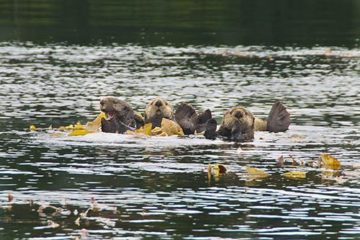 California’s shellfish industry fought the federal government’s termination of a “no-otter zone” along the Southern California coast at a Ninth Circuit hearing on Friday. Four fishing industry groups sued the U.S. Fish & Wildlife Service in 2013, claiming its decision to end a long-disputed sea otter translocation program would “severely compromise if not destroy” shellfish and other marine fisheries on the southern coast. Nixing the program would lead more than 300 sea otters to occupy a previously “otter-free zone” within 10 years and prey on the shellfish which fishermen depend on for their livelihood, the plaintiffs claimed in their 2013 complaint. But environmental groups had long pushed for the government to end the program, claiming it was a disaster from the start and that it bowed to the interests of the oil and fishing industries. Read the rest here 07:58
California’s shellfish industry fought the federal government’s termination of a “no-otter zone” along the Southern California coast at a Ninth Circuit hearing on Friday. Four fishing industry groups sued the U.S. Fish & Wildlife Service in 2013, claiming its decision to end a long-disputed sea otter translocation program would “severely compromise if not destroy” shellfish and other marine fisheries on the southern coast. Nixing the program would lead more than 300 sea otters to occupy a previously “otter-free zone” within 10 years and prey on the shellfish which fishermen depend on for their livelihood, the plaintiffs claimed in their 2013 complaint. But environmental groups had long pushed for the government to end the program, claiming it was a disaster from the start and that it bowed to the interests of the oil and fishing industries. Read the rest here 07:58
Grand Isle commercial fisherman high on drugs, sentenced to 20 years for his sixth DUI conviction
 44-year-old Rockey Burnham, 44, was convicted as charged of his second fourth-offense DUI on April 20. Fourth-offense DUI is the most serious offense available to prosecutors under Louisiana law. Burnham was arrested on April 28, 2015, after he crashed a boat into moored vessels and the shrimp dock owned by Dean Blanchard Seafood. The U.S. Coast Guard investigated the boat wreck, while the Louisiana Department of Wildlife and Fisheries handled the DUI investigation. The state agents concluded that Burnham did poorly on the field sobriety test, leading to blood work that yielded the presence of diazepam, nordiazepam and methamphetamine, according to evidence presented at the trial. His last conviction before this year’s was in 2011, for an arrest a year earlier for driving a trawler without authorization while under the influence of alcohol and crystal methamphetamine, crashing it into a dock. Read the story here 15:24
44-year-old Rockey Burnham, 44, was convicted as charged of his second fourth-offense DUI on April 20. Fourth-offense DUI is the most serious offense available to prosecutors under Louisiana law. Burnham was arrested on April 28, 2015, after he crashed a boat into moored vessels and the shrimp dock owned by Dean Blanchard Seafood. The U.S. Coast Guard investigated the boat wreck, while the Louisiana Department of Wildlife and Fisheries handled the DUI investigation. The state agents concluded that Burnham did poorly on the field sobriety test, leading to blood work that yielded the presence of diazepam, nordiazepam and methamphetamine, according to evidence presented at the trial. His last conviction before this year’s was in 2011, for an arrest a year earlier for driving a trawler without authorization while under the influence of alcohol and crystal methamphetamine, crashing it into a dock. Read the story here 15:24
To avoid another massive fish kill in the Peconic, limits on bunker fishing lifted by “episodic event set aside program,”
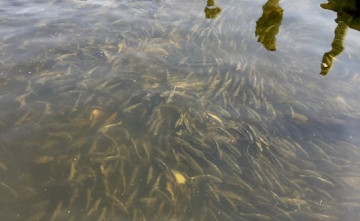 With unusually large numbers of bunker fish appearing in the Peconic River this spring, commercial fishermen will be allowed to net bunker in an effort to prevent the massive bunker kills seen last year, thanks to a ruling announced today by the Atlantic States Marine Fisheries Commission. The interstate commission, which limits how many fish can be caught each year, has agreed to add New York to a special program that allows greater numbers of bunker to be harvested in places where bunker are occurring in higher abundance than normal. The decision was made specifically to reduce the amount of bunker in the Peconic Estuary, where bunker have been reported in unusually large numbers since last month. Commercial fishermen will be allowed to use seine nets to capture bunker in the Peconic River. Up to one million pounds of bunker are allowed to be harvested under the episodic event set aside program. Read the rest here 14:25
With unusually large numbers of bunker fish appearing in the Peconic River this spring, commercial fishermen will be allowed to net bunker in an effort to prevent the massive bunker kills seen last year, thanks to a ruling announced today by the Atlantic States Marine Fisheries Commission. The interstate commission, which limits how many fish can be caught each year, has agreed to add New York to a special program that allows greater numbers of bunker to be harvested in places where bunker are occurring in higher abundance than normal. The decision was made specifically to reduce the amount of bunker in the Peconic Estuary, where bunker have been reported in unusually large numbers since last month. Commercial fishermen will be allowed to use seine nets to capture bunker in the Peconic River. Up to one million pounds of bunker are allowed to be harvested under the episodic event set aside program. Read the rest here 14:25
Looking ahead to next years California crab season
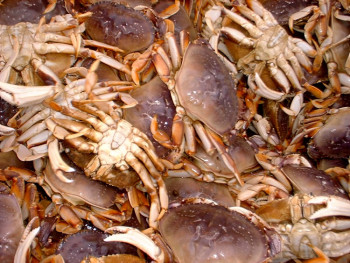 Should California’s four-year drought break, causing rivers to run, next year’s crab season could be worse than the 2015-2016 season. The industry has, so far, lost at least $48 million in revenue for crab fishermen statewide, according to information presented at the Joint Committee on Fisheries and Aquaculture hearing last Thursday, April 28 in Sacramento. Dr. Raphael Kudela and his colleague, Dr. William Sydeman, senior scientist with the Farallones Institute Team, fear if this season is followed by enough rain to end the drought, the rivers will run, bringing rich nutrients to the ocean. The algal bloom will then feed off the nutrients and, according to Kudela, be 400 percent more toxic than it was this year. There is a chance, however, that a La Nina weather pattern could be cool enough to make the algal bloom dissipate. As Secretary of Commerce Penny Pritzker drags her feet on disaster relief. Read the rest here 13:52
Should California’s four-year drought break, causing rivers to run, next year’s crab season could be worse than the 2015-2016 season. The industry has, so far, lost at least $48 million in revenue for crab fishermen statewide, according to information presented at the Joint Committee on Fisheries and Aquaculture hearing last Thursday, April 28 in Sacramento. Dr. Raphael Kudela and his colleague, Dr. William Sydeman, senior scientist with the Farallones Institute Team, fear if this season is followed by enough rain to end the drought, the rivers will run, bringing rich nutrients to the ocean. The algal bloom will then feed off the nutrients and, according to Kudela, be 400 percent more toxic than it was this year. There is a chance, however, that a La Nina weather pattern could be cool enough to make the algal bloom dissipate. As Secretary of Commerce Penny Pritzker drags her feet on disaster relief. Read the rest here 13:52
Oregon’s pink shrimp fishermen voluntarily suspend harvesting operations
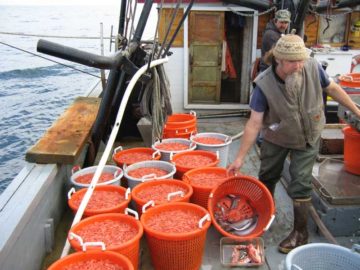 The pink shrimp fleet based in Oregon agreed to suspend harvesting operations May 4, due to an over abundance of sub-legal sized shrimp. After six years of record catches, the fleet was expecting the worst after this winter’s El Nino was elevated to “super” status, as the warm water associated with an El Nino is usually detrimental to shrimp recruitment, but those fears have been erased, according to a release from the Oregon Trawl Commission. The start of this year’s season was delayed for three weeks over a price dispute, but once the nets hit the water, fishermen were surprised to see a strong year class of one-year-old shrimp in the water. Read the rest here 09:34
The pink shrimp fleet based in Oregon agreed to suspend harvesting operations May 4, due to an over abundance of sub-legal sized shrimp. After six years of record catches, the fleet was expecting the worst after this winter’s El Nino was elevated to “super” status, as the warm water associated with an El Nino is usually detrimental to shrimp recruitment, but those fears have been erased, according to a release from the Oregon Trawl Commission. The start of this year’s season was delayed for three weeks over a price dispute, but once the nets hit the water, fishermen were surprised to see a strong year class of one-year-old shrimp in the water. Read the rest here 09:34
Marquesas Key: Coast Guard looking into commercial fishing vessel firing shots at recreational boat
 U.S. Coast Guard investigators are looking into a report that someone aboard a commercial fishing vessel fired several shots at a recreational boat about 20 nautical miles southwest of Wednesday morning. The Coast Guard’s Investigative Service is conducting a criminal probe on “the alleged shooting incident,” according to an agency press release. It’s not yet known if any arrests were made. Special Agent Paul Shultz, resident agent in charge of Key West for the Coast Guard Investigative Service, could not be reached for comment. The people aboard the recreational boat, only described in the press release as a 20-foot pleasure craft, were reportedly diving when the incident happened about 9:45 a.m. Read the rest here 07:44
U.S. Coast Guard investigators are looking into a report that someone aboard a commercial fishing vessel fired several shots at a recreational boat about 20 nautical miles southwest of Wednesday morning. The Coast Guard’s Investigative Service is conducting a criminal probe on “the alleged shooting incident,” according to an agency press release. It’s not yet known if any arrests were made. Special Agent Paul Shultz, resident agent in charge of Key West for the Coast Guard Investigative Service, could not be reached for comment. The people aboard the recreational boat, only described in the press release as a 20-foot pleasure craft, were reportedly diving when the incident happened about 9:45 a.m. Read the rest here 07:44
The Fisheries Survival Fund: Marine monument a bad idea as Enviro groups push Cashes Ledge proposal back on table
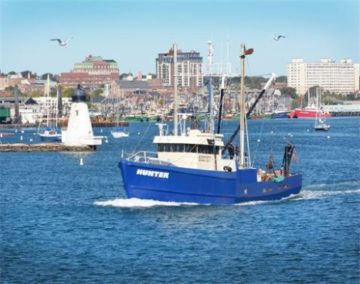 A fishing trade group that represents scallopers from Maine to Virginia has joined Northeast groundfishermen in opposing the designation of any marine national monuments in New England waters. The Fisheries Survival Fund (FSF) penned a May 4 letter to Obama administration officials stating its opposition to the establishment of the monuments while also criticizing the unilateral process — presidential decree through the Antiquities Act — being considered for designating them. “A monument designation, with its unilateral implementation and opaque process, is the exact opposite of the fisheries management process in which we participate,” FSF legal counsels David Frulla and Andrew Minkiewicz wrote to Christy Goldfuss and Whitley Saumwebber, executives in the White House Council on Environmental Quality. Read the rest here 07:20
A fishing trade group that represents scallopers from Maine to Virginia has joined Northeast groundfishermen in opposing the designation of any marine national monuments in New England waters. The Fisheries Survival Fund (FSF) penned a May 4 letter to Obama administration officials stating its opposition to the establishment of the monuments while also criticizing the unilateral process — presidential decree through the Antiquities Act — being considered for designating them. “A monument designation, with its unilateral implementation and opaque process, is the exact opposite of the fisheries management process in which we participate,” FSF legal counsels David Frulla and Andrew Minkiewicz wrote to Christy Goldfuss and Whitley Saumwebber, executives in the White House Council on Environmental Quality. Read the rest here 07:20
North Carolina Fisheries Association Weekly Update for May 2, 2016
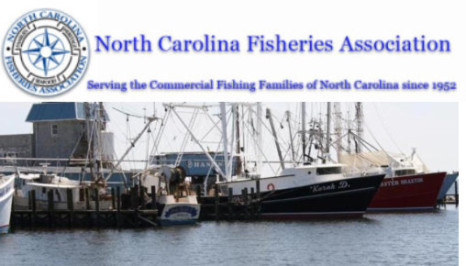 Click here to read the Weekly Update, to read all the updates, Click here 15:45
Click here to read the Weekly Update, to read all the updates, Click here 15:45

Rum-Running: Montauk’s Economic Engine, 1919–1932
Montauk is the fishing capital of the world, a small town with more world fishing records than any other town anywhere. It is also one of this country’s great surfing spots. A recent rating organization ranked it #8 for surfing on the East Coast. There was a time, however, when Montauk was the rum-running capital of America. In 1919, Congress passed the 18th Amendment, making it illegal to buy and sell alcoholic beverages in America. For the next 13 years, the people of this country, the vast majority of them anyway, ignored the law, drank as much illegal alcohol as they could find and partied every weekend late into the night. The era was called the “Roaring ’20s.” Read the story here 15:12
9th U.S. Circuit Court of Appeals backs fishermen in antitrust suit
 A federal court order blocking Pacific Seafood Group from purchasing Ocean Gold Seafoods will remain until a trial into whether the sale would create a monopoly. Commercial fishermen won a preliminary injunction against the sale last year in U.S. District Court in Medford. A three-judge panel of the 9th U.S. Circuit Court of Appeals upheld the district court’s order Tuesday. The fishermen allege that Pacific Seafood’s acquisition of Ocean Gold, a large fish processor in Westport, Washington, would establish a monopoly in the groundfish, whiting and coldwater shrimp markets. “Fishermen in Warrenton and Astoria have a significant stake in this battle,” Haglund said. “If Pacific Seafood were successful in acquiring Ocean Gold, industry sources tell us that the Warrenton plant will never be rebuilt and would be little more than a landing station.” Read the story here 14:00
A federal court order blocking Pacific Seafood Group from purchasing Ocean Gold Seafoods will remain until a trial into whether the sale would create a monopoly. Commercial fishermen won a preliminary injunction against the sale last year in U.S. District Court in Medford. A three-judge panel of the 9th U.S. Circuit Court of Appeals upheld the district court’s order Tuesday. The fishermen allege that Pacific Seafood’s acquisition of Ocean Gold, a large fish processor in Westport, Washington, would establish a monopoly in the groundfish, whiting and coldwater shrimp markets. “Fishermen in Warrenton and Astoria have a significant stake in this battle,” Haglund said. “If Pacific Seafood were successful in acquiring Ocean Gold, industry sources tell us that the Warrenton plant will never be rebuilt and would be little more than a landing station.” Read the story here 14:00
Proposal For At Sea Observers Could Further Hurt U.S. Purse Seiner Fleet
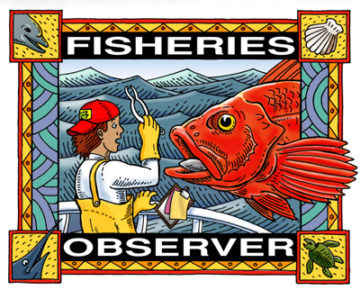 A new fishery rule that the federal government is moving to implement is expected to deal another financial blow to the US purse seiner fleet, which is already faced with stiff competition from foreign vessels such as the Chinese fleet, who are subsidized by their government, China. US National Marine Fishery Service (NMFS) has proposed a rule which would require Observers to be on board US purse seiners fishing in the western and central Pacific ocean (WCPO). The proposal was issued last week under authority of the Western and Central Pacific Fisheries Convention Implementation Act. It is a three-pronged proposed rule, which includes a move to establish restrictions in 2016 and 2017 on the use of fish aggregating devices (FADs) by U.S. purse seine vessels in the WCPO; and to establish limits in 2016 and 2017 on the amount of bigeye tuna that may be captured by U.S. longline vessels in the WCPO. Read the rest here 11:54
A new fishery rule that the federal government is moving to implement is expected to deal another financial blow to the US purse seiner fleet, which is already faced with stiff competition from foreign vessels such as the Chinese fleet, who are subsidized by their government, China. US National Marine Fishery Service (NMFS) has proposed a rule which would require Observers to be on board US purse seiners fishing in the western and central Pacific ocean (WCPO). The proposal was issued last week under authority of the Western and Central Pacific Fisheries Convention Implementation Act. It is a three-pronged proposed rule, which includes a move to establish restrictions in 2016 and 2017 on the use of fish aggregating devices (FADs) by U.S. purse seine vessels in the WCPO; and to establish limits in 2016 and 2017 on the amount of bigeye tuna that may be captured by U.S. longline vessels in the WCPO. Read the rest here 11:54
Mariner Rescued after 2 Months Adrift at Sea
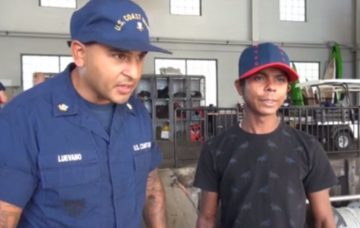 A 29-year-old man arrived in good condition to Honolulu Wednesday aboard a Coast Guard small boat after being rescued by merchant mariners in the Southeastern Pacific Ocean and surviving a two- month ordeal at sea. A Coast Guard 45-foot Response Boat-Medium crew from Station Honolulu safely transported the man from the motor vessel Nikkei Verde offshore of Honolulu to the Coast Guard Base Wednesday morning to meet awaiting EMS in stable condition. According to the survivor he and three companions set out from Columbia more than two months earlier. Once the skiff’s engine became disabled they were adrift. He said he caught and ate fish and seagulls to stay alive. The three other men reportedly perished at sea. Read the rest here 11:30
A 29-year-old man arrived in good condition to Honolulu Wednesday aboard a Coast Guard small boat after being rescued by merchant mariners in the Southeastern Pacific Ocean and surviving a two- month ordeal at sea. A Coast Guard 45-foot Response Boat-Medium crew from Station Honolulu safely transported the man from the motor vessel Nikkei Verde offshore of Honolulu to the Coast Guard Base Wednesday morning to meet awaiting EMS in stable condition. According to the survivor he and three companions set out from Columbia more than two months earlier. Once the skiff’s engine became disabled they were adrift. He said he caught and ate fish and seagulls to stay alive. The three other men reportedly perished at sea. Read the rest here 11:30
New Jonah crab rules for East Coast fishermen
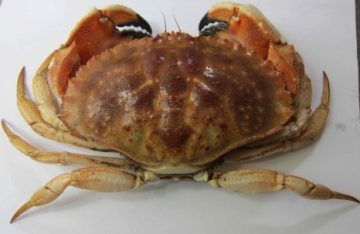 Fishing regulators say there will be a new limit on how many Jonah crabs fishermen will be allowed to harvest. East Coast fishermen’s catch of Jonah crabs has been growing in recent years as the crustacean grows in popularity. They are used in processed products and as an alternative to the more expensive Dungeness and stone crabs. The Atlantic States Marine Fisheries Commission has set a bycatch limit of 1,000 pounds of crabs per trip for trawl and net fishermen. Fishermen who unintentionally catch Jonah crabs using certain kinds of traps will face the same standard. Bycatch is incidental catch by fishermen who are seeking something else. The commission says the new standards will prevent increases in proliferation of traps. AP
Fishing regulators say there will be a new limit on how many Jonah crabs fishermen will be allowed to harvest. East Coast fishermen’s catch of Jonah crabs has been growing in recent years as the crustacean grows in popularity. They are used in processed products and as an alternative to the more expensive Dungeness and stone crabs. The Atlantic States Marine Fisheries Commission has set a bycatch limit of 1,000 pounds of crabs per trip for trawl and net fishermen. Fishermen who unintentionally catch Jonah crabs using certain kinds of traps will face the same standard. Bycatch is incidental catch by fishermen who are seeking something else. The commission says the new standards will prevent increases in proliferation of traps. AP
Fin Clipping – R.I. Adopts Laws to Curb Illegal Sale of Striped Bass
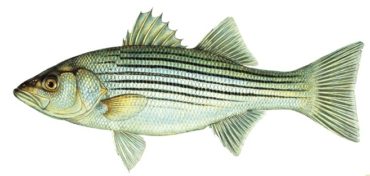 The Rhode Island Department of Environmental Management (DEM) recently enacted new regulations to help prevent the illegal harvest and sale of Atlantic striped bass. The new rules, outlined in Rhode Island Marine Fisheries Regulations, Part XII Striped Bass, require recreational anglers to clip the right pectoral fin of striped bass 34 inches or larger at the time of harvest; fish with a missing right pectoral fin can’t be sold commercially in Rhode Island. DEM said the new regulations, adopted following considerable public input, will help prevent “stockpiling,” which occurs when fish are harvested on a day closed to commercial fishing and then offered for sale on an open day. The new regulations also address fish being illegally transported and sold in neighboring states, according to DEM. Read the rest here 09:00
The Rhode Island Department of Environmental Management (DEM) recently enacted new regulations to help prevent the illegal harvest and sale of Atlantic striped bass. The new rules, outlined in Rhode Island Marine Fisheries Regulations, Part XII Striped Bass, require recreational anglers to clip the right pectoral fin of striped bass 34 inches or larger at the time of harvest; fish with a missing right pectoral fin can’t be sold commercially in Rhode Island. DEM said the new regulations, adopted following considerable public input, will help prevent “stockpiling,” which occurs when fish are harvested on a day closed to commercial fishing and then offered for sale on an open day. The new regulations also address fish being illegally transported and sold in neighboring states, according to DEM. Read the rest here 09:00

Working Waterfront – Purchase of family-owned fish pier on Chatham town meeting docket
Shareen Davis will miss the briny smell of nets drying in the loft overhead, the totes of silver-sided fish glinting in the sun, the black arcs of squid ink tattooing the decking.To her husband, Ernie, the small pier on Stage Harbor with its two-story fish house has been a second home. His father Lester “Bony” Eldredge and a partner bought it back in the late 1940s, and it has been in the Eldredge family for nearly 60 years. A pier has been on the same spot since the 1700s, Eldredge said. It is the longest continuously operated commercial pier in town. Once it was known they were considering a sale, the Eldredges received offers from people in the private sector but preferred to sell it to the town, even at a lower price, because they felt Chatham would maintain it as the town’s only pier on Nantucket Sound for offloading commercial catch. Video, read the rest here 08:17
Global Recall on Kannad SAFELINK EPIRBs
 U.S. Coast Guard issued an urgent marine safety alert for shipowners and operators announcing the recall of certain Kannad SAFELINK brand Emergency Position Indicating Radio Beacons (EPIRBs). The devices have a yellow plastic body, which may age prematurely when subjected to “specific environmental conditions,” which could result in the beacon not operating in an emergency, the USCG said. The Coast Guard strongly encouraged operators to check their Kannad-branded EPIRB against an online serial number list to determine whether it was among the models affected. The product number can be found on the back of the EPIRB, and entered at http://www.safelinkepirbsupport.co.uk Read the rest here 20:56
U.S. Coast Guard issued an urgent marine safety alert for shipowners and operators announcing the recall of certain Kannad SAFELINK brand Emergency Position Indicating Radio Beacons (EPIRBs). The devices have a yellow plastic body, which may age prematurely when subjected to “specific environmental conditions,” which could result in the beacon not operating in an emergency, the USCG said. The Coast Guard strongly encouraged operators to check their Kannad-branded EPIRB against an online serial number list to determine whether it was among the models affected. The product number can be found on the back of the EPIRB, and entered at http://www.safelinkepirbsupport.co.uk Read the rest here 20:56
Bill Karp, Director of Northeast Fisheries Science Center is retiring
 The head of NOAA Fisheries’ Northeast Fisheries Science Center in Woods Hole has announced his retirement in September from federal service after just under four years as head of the center. Bill Karp came to Cape Cod after serving many years in the Alaska Fisheries Science Center, and has 30 years of fisheries research experience. The science centers conduct most of the fisheries research regulators then use to set policies and quotas, and is often in the middle of sharp disagreements between researchers and the commercial fishing industry. Karp is a regular presence at the marathon New England Fisheries Management Council’s meetings. Karp wrote in a retirement announcement that he was honored to have been selected for the position on the Cape and enjoyed working with dedicated and accomplished staff. Read the rest here 19:29
The head of NOAA Fisheries’ Northeast Fisheries Science Center in Woods Hole has announced his retirement in September from federal service after just under four years as head of the center. Bill Karp came to Cape Cod after serving many years in the Alaska Fisheries Science Center, and has 30 years of fisheries research experience. The science centers conduct most of the fisheries research regulators then use to set policies and quotas, and is often in the middle of sharp disagreements between researchers and the commercial fishing industry. Karp is a regular presence at the marathon New England Fisheries Management Council’s meetings. Karp wrote in a retirement announcement that he was honored to have been selected for the position on the Cape and enjoyed working with dedicated and accomplished staff. Read the rest here 19:29
McDowell Group Report outlines economics of Kodiak Island’s seafood industry. Jobs=38%
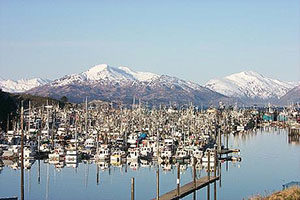 Kodiak is grappling with how new ways of managing groundfish might affect the island’s economy. Plans being crafted now affect catches of up to 25 different fish species – which together made up 83 percent of all Kodiak landings in 2014. To provide some guidance, a new economic impact report breaks down how the entire seafood industry plays out throughout the Kodiak Island borough, which includes six outlying villages for a total population of 14,000 residents. The draft report done by the McDowell Group gives a 10 year snapshot starting in 2005, covering all the local actions it takes to be a seafood powerhouse year after year. Nearly 500 million pounds of seafood worth $150 million to fishermen was delivered to Kodiak Island in 2014. Read the rest here 18:08
Kodiak is grappling with how new ways of managing groundfish might affect the island’s economy. Plans being crafted now affect catches of up to 25 different fish species – which together made up 83 percent of all Kodiak landings in 2014. To provide some guidance, a new economic impact report breaks down how the entire seafood industry plays out throughout the Kodiak Island borough, which includes six outlying villages for a total population of 14,000 residents. The draft report done by the McDowell Group gives a 10 year snapshot starting in 2005, covering all the local actions it takes to be a seafood powerhouse year after year. Nearly 500 million pounds of seafood worth $150 million to fishermen was delivered to Kodiak Island in 2014. Read the rest here 18:08






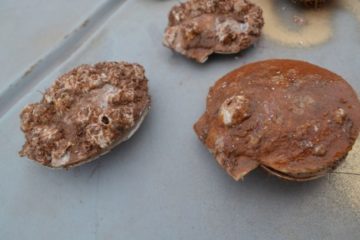
 A group of roughly 20 Native Hawaiians, local fishermen, scientists and conservationists rallied Thursday morning at Kewalo Marine Laboratory, armed with a 43,000-signature (Pew) petition urging President Barack Obama to expand federal protections around the Northwestern Hawaiian Islands.President George W. Bush established Papahanaumokuakea Marine National Monument in 2006 as, at the time, the largest fully protected marine reserve on the planet. Its protections, which include prohibitions against commercial fishing, extend 50 miles outside the island chain. The group wants Obama to expand the monument to the maximum limit that federal jurisdiction allows — 200 miles out, with certain exceptions. That would make it nine times its current size of 139,797 square miles, and bigger than all the country’s national parks combined.
A group of roughly 20 Native Hawaiians, local fishermen, scientists and conservationists rallied Thursday morning at Kewalo Marine Laboratory, armed with a 43,000-signature (Pew) petition urging President Barack Obama to expand federal protections around the Northwestern Hawaiian Islands.President George W. Bush established Papahanaumokuakea Marine National Monument in 2006 as, at the time, the largest fully protected marine reserve on the planet. Its protections, which include prohibitions against commercial fishing, extend 50 miles outside the island chain. The group wants Obama to expand the monument to the maximum limit that federal jurisdiction allows — 200 miles out, with certain exceptions. That would make it nine times its current size of 139,797 square miles, and bigger than all the country’s national parks combined. 